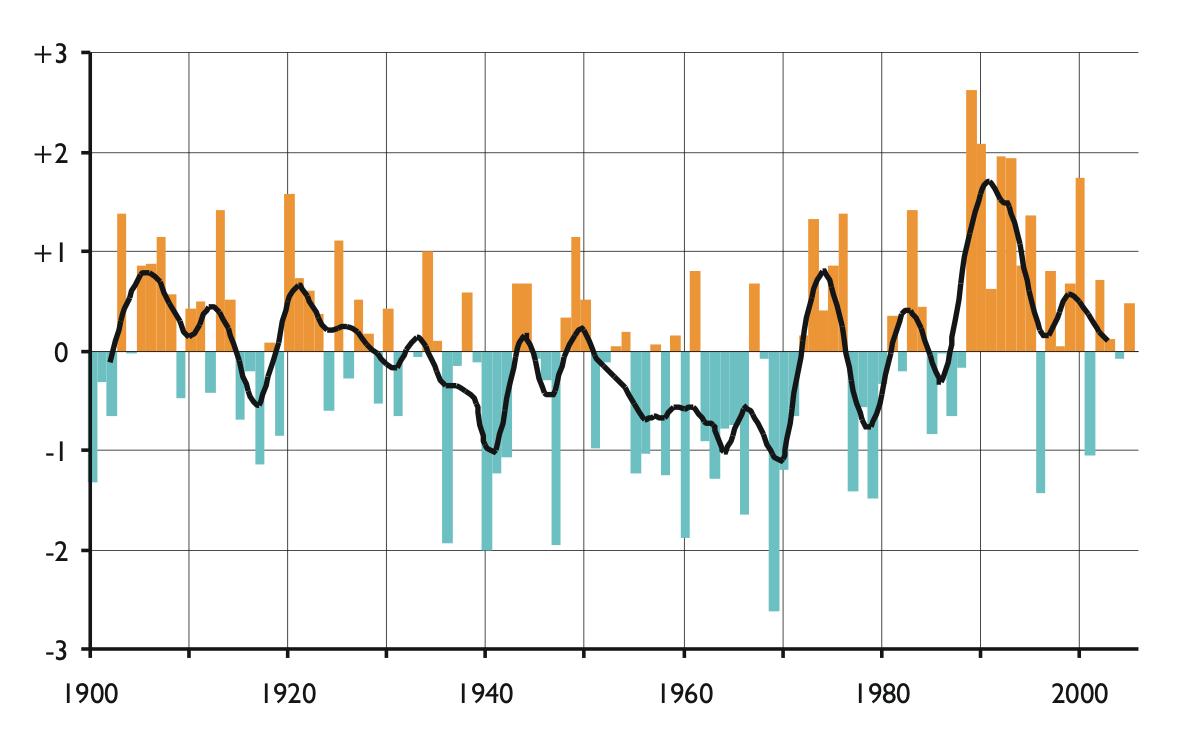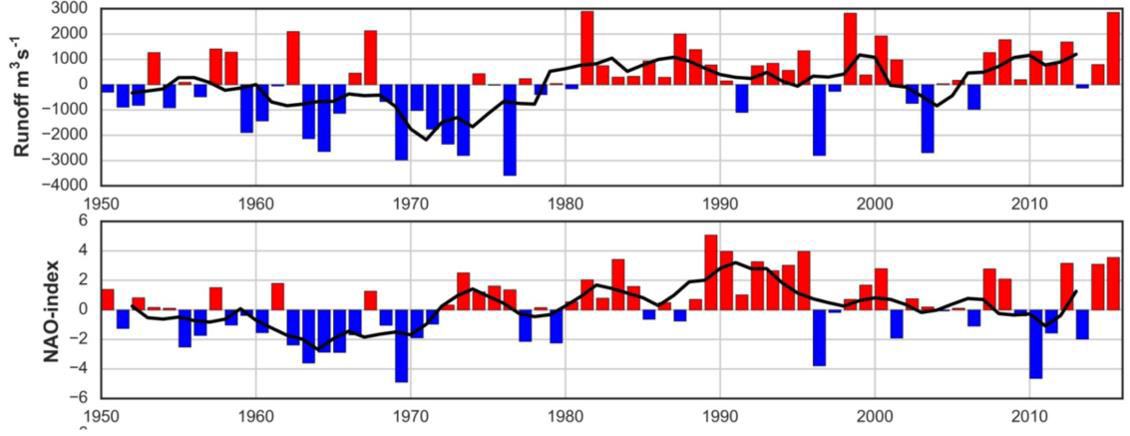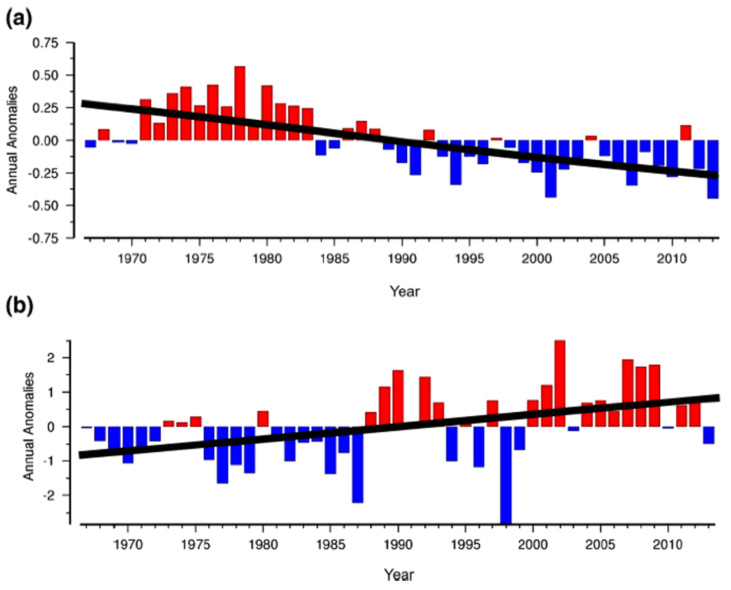- Submissions

Full Text
Environmental Analysis & Ecology Studies
The Baltic Sea Ecosystem Regulation Mechanism
Jari Hänninen*
Associate Professor, Finland
*Corresponding author: Jari Hänninen, Associate Professor, Finland
Submission: March 13, 2022; Published: March 16, 2022

ISSN 2578-0336 Volume9 Issue5
Introduction
Understanding the functioning of the Baltic Sea ecosystem has been one of the most important tasks of the Seili Research Station of the University of Turku, Finland. Understanding requires not only the study of the regulatory mechanisms of the Baltic Sea ecosystem, but also the study of the climatic conditions of the Atlantic, as the climatic conditions of the ocean ultimately determine how the Baltic Sea ecosystem develops [1]. The reason for this is that the origin of all water in the brackish water Baltic Sea, both saline and freshwater, is the Atlantic Ocean. Freshwater originates from evaporation in the Atlantic, which, driven by prevailing winds due to the Coriolis force, rains the catchment area of the Baltic Sea and ends up in the main basin of the sea along the rivers. Saline water enters through the Danish straits as a result of strong winter storms in the North Sea [2]. Thus, the brackish water is a combination of these two water sources.
The regulation mechanism of the Atlantic climate on the Baltic Sea ecosystem is best described by a phenomenon called the North Atlantic Oscillation (NAO). The NAO is an index that measures the difference in air pressure between the two major meteorological centers in the Atlantic [3]. One is relatively constant low pressure, located near Iceland, and the other is high pressure, located between the Azores archipelago and Caribbean (Figure 1). The index indicates the deviation from the long-term mean and can get either positive or negative values (Figure 2). In the case of a positive index value, the air pressure differences between meteorological centers are at their strongest, which means that clouds, formed in the Atlantic, route mainly over the warm Gulf Stream. These clouds are directed towards the northern Europe which results mild and rainy climatic conditions particularly in winters. At the same time, the southern Europe in the Mediterranean area suffers from cold and drought weather. During a negative NAO index, the situation is the opposite - in northern Europe, winters are icy and frosty, while in southern Europe it is mild and rainy [4]. This phenomena were previously referred by elderly people as “marine” or “continental” climates.
Figure 1: Cloud pathways and the impact of the Atlantic on the European climate at different stages of the NAO index. Yellow L represents constant low pressure near Iceland and gray H high pressure around the Azores (according to Stenseth et al. [4]).

Figure 2: Winter NAO index 1900-2005. The orange bars represent the positive phase of the index, the turquoises the negative. The positive phase has been prevalent since the 1980s [3].

For the regulation of the Baltic Sea ecosystem, I see, the most essential thing is what has happened in the NAO since the 1980s. Then the positive index remained more prevalent at the time, which has led to significant increase in winter rainfall in northern Europe (Figure 3), and this trend has still continued since then. I believe this due to global climate change. The change led to a situation where freshwater runoff from the Baltic Sea catchment area into the main basin has intensified and therefore the salinity of brackish water has started to decline. Together with the warming of seawater, this phenomenon can be seen the most crucial change caused by climate change for the Baltic Sea. The time series of the marine environmental long-term monitoring conducted by the Seili Research Station since 1964 have been utilized in the study of the effects of climate change in to the Archipelago Sea, northern Baltic. The seawater salinity decrease has been modeled, among other things, on the basis of the changes in the freshwater runoff in to the Baltic Sea [1]. Moreover, the decrease in the salinity and the rise in seawater temperature have modeled further for the biological effects of these changes, e.g. in the composition of the zooplankton community (Figure 4) [5-7], not only In the Baltic Sea but also in the North Sea [8,9], and still in the change in the fitness of planktoneating Baltic Herring [10].
Figure 3: Upper panel: Total runoff deviation during 1950 - 2015 to the Baltic Sea. Lower panel: NAO index during 1950 - 2015 based on winter mean values of the NAO index. Positive index indicates stronger westerly winds bringing warmer and wetter winters to Scandinavia. Black line represents the five-year running mean for each panel (derived from HELCOM [11]).

Figure 4: Annual positive (red) and negative (blue) anomalies (May-September, 1967-2013) of a) salinity and b) temperature (°C) at 0-20m water depth in the northern Baltic Archipelago Sea. Lines are linear regressions of the annual anomalies versus year (solid black line = p≤0.01). During the period, the salinity of the seawater has decreased some 0.5 PSU, at the same time the temperature has increased by 1.5 °C. Note the difference between y-axes [6].

In a newly launched research project the study will cover also the terrestrial environment. We investigate through biomass changes how the climate induced prolongation of the growing season, due to rising temperatures, has affected the biodiversity of invertebrates living in two different ecosystems. The subjects of the study are marine zooplankton time series in the Baltic Sea and the arctic butterflies from the Finnish Lapland. Our aim in the work is to find out how similar the mechanisms of climate change regulation can be to these groups of organisms that live in marine and terrestrial ecosystems [11].
References
- Hänninen J, Vuorinen I, Hjelt P (2000) Climatic factors in the Atlantic control the oceanographic and ecological changes in the Baltic Sea. Limnology and Oceanography 45(3): 703-710.
- Hänninen J, Vuorinen I (2011) Time varying parameter analysis of the Baltic sea freshwater runoff. Environmental Modeling and Assessment 16: 53-60.
- Hurrell JW, (1995) Decadal trends in the North Atlantic Oscillation and relationships to regional temperature and precipitation. Science 269: 676-679.
- Stenseth NC, Mysterud H, Ottersen G, Hurrell JW, Chan KK, et al. (2002) Ecological effects of climate fluctuations. Science 297(5585): 1292-1296.
- Dippner JW, Hänninen J, Kuosa H, Vuorinen I (2001) The Influence of climate variability on zooplankton abundance in the northern Baltic Archipelago Sea (SW Finland). ICES Journal of Marine Science 58(3): 569-578.
- Mäkinen K, Vuorinen I, Hänninen J (2017) Climate-induced hydrography change favors small-bodied zooplankton in a coastal ecosystem. Hydrobiologia 729: 83-96.
- Vuorinen I, Hänninen J, Viitasalo M, Helminen U, Kuosa H (1998) Proportion of copepod biomass declines together with decreasing salinities in the Baltic Sea. ICES Journal of Marine Science 55: 767-774.
- Hänninen J, Vuorinen I, Rajasilta M, Reid PC (2015) Response of the baltic and north seas to river runoff from the baltic watershed - physical and biological changes. Progress in Oceanography 138: 91-104.
- Vuorinen I, Hänninen J, Rajasilta M, Laine P, Eklund J, et al. (2015) Corrigendum to “Scenario simulations of Future Salinity and Ecological Consequences in the Baltic Sea and Adjacent North Sea Areas-Implications for Environmental Monitoring” [Ecol. Indic. 50 (2015) 196-205] Ecological Indicators 53: 294.
- Rajasilta M, Hänninen J, Laaksonen L, Laine P, Suomela JP, et al. (2019) Influence of environmental conditions, population density and prey type on the Lipid Content in Baltic Herring (Clupea Harengus Membras) from the Northern Baltic Sea. Canadian Journal of Fisheries and Aquatic Sciences 76(4): 576-585.
- Johansson J (2016) Total and Regional Runoff to the Baltic Sea. HELCOM Baltic Sea Environment Fact Sheet. p. 6.
© 2022 © Jari Hänninen. This is an open access article distributed under the terms of the Creative Commons Attribution License , which permits unrestricted use, distribution, and build upon your work non-commercially.
 a Creative Commons Attribution 4.0 International License. Based on a work at www.crimsonpublishers.com.
Best viewed in
a Creative Commons Attribution 4.0 International License. Based on a work at www.crimsonpublishers.com.
Best viewed in 







.jpg)






























 Editorial Board Registrations
Editorial Board Registrations Submit your Article
Submit your Article Refer a Friend
Refer a Friend Advertise With Us
Advertise With Us
.jpg)






.jpg)














.bmp)
.jpg)
.png)
.jpg)










.jpg)






.png)

.png)



.png)






